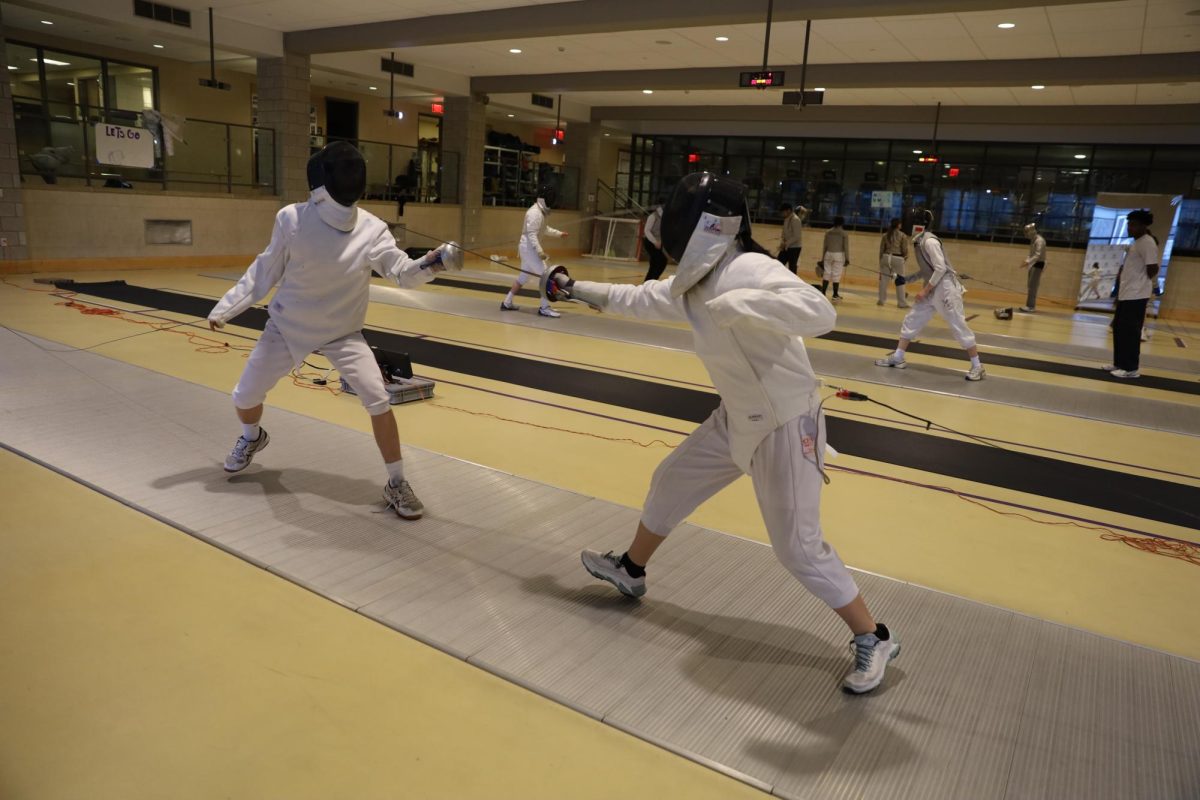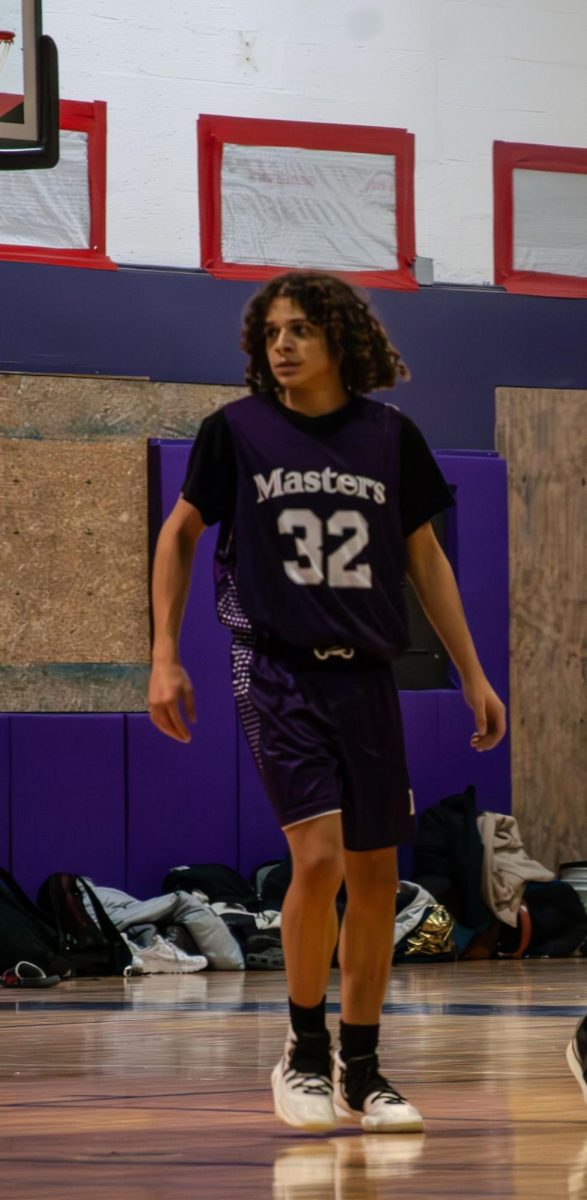“Ouch!” A startled sophomore, April Wang, yelped from the bruise suffered during the first match of the fencing season. When the opponent’s blade plunged into Wang like a sharp spear, she bowed her head, clutching her wound with a trembling hand. Bearing her pain, Wang kept fencing until the bouts ended. When she finally lifted her shirt, there exposed a large, ugly purple bruise, swelling more and more. Wang then lay in the health center of another school.
Fencing is widely regarded as a moderate and safe sport with few injuries. Indeed, fencers practice in professional fencing studios with layers of protective gear: a chest protector, underarm protector, jacket, and lamé.
However, fencing’s intensity hides behind seemingly thick and solid jackets. Fencers quietly suffer many daunting bruises.
Epee fencers get bruises most frequently compared to the other two types of fencing.
In epee, fencers aim to stab the opponent’s body with the weapon’s tip; whoever lands first gets the point. Though the blades have no sharp points or edges, fencers still concentrate the weight of their entire body toward a single vulnerable point, delivering wincing pain through a direct shot to the chest or occasional whack on the forearm. Thus, bruises are common.
Epee head coach Shomari Moore said, “I don’t think there’s any fencer that has fenced and not got bruised.”
Wang said she has at least fifteen bruises on her arms, elbows, and thighs. She admitted the pain and shared, “After you get hit, it is painful; you’ll be conscious of the scar, even though I wear everything while fencing.”
Freshman epee fencer Crystal Niu said, “I get at least one bruise every week. I purchased several bottles of pain relief lotions.”
Wang received her worst bruise during the season’s first away game. She reflected, “I could feel bleeding while fencing that last bout. I was nervous but I knew I had to push through. There was no stopping in epee.”
While physical bruises are visible, the mental toll is a quieter struggle.”I was frightened last year after fencing for the first time. Fencing’s intensity exceeded my expectation,” Wang said.
Every evening after a shower, Wang would stare at her bruises in the mirror, recalling losing matches to older fencers in shame. Yet, these frustrations motivated her to become a stronger fencer.
Nevertheless, fencers’ persistence, Moore’s guidance, and the inclusive environment enabled new fencers to overcome their physical and mental bruises.
Wang shared, “I was forced to adapt because every teammate is making progress while bearing these pains. If you are stuck in pain and lose concentration, you will get lost and get hurt harder the next time.”
Moore’s ruthless coaching style further helped new fencers develop mental toughness. “The way to overcome fear is to put yourself in scary situations over and over again,” he said.
“The older team members are excellent mentors for me. They don’t even stab me hard,” Niu said. This “extra care” not only supports new fencers but also ensures the positive growth of the fencing team.
Through this arduous training and determination, varsity epee fencers transform pain into strength, and see their bruises as badges of hard work.
When wearing sleeveless dresses in the summer, girls on the epee team are not embarrassed to expose their bruises, which reminds them of the winter combat when they put their blades up high. .
Wang shared, “I will actually show the scars and tell people my fencing stories. I treasure them as part of my honor and body, though it may be troublesome for those who want flawless skin.”






